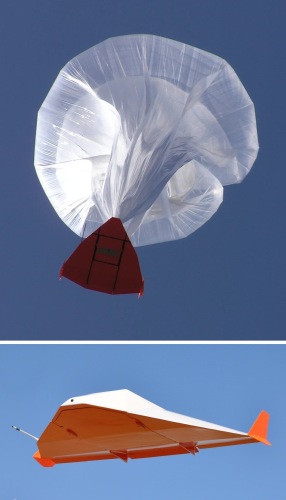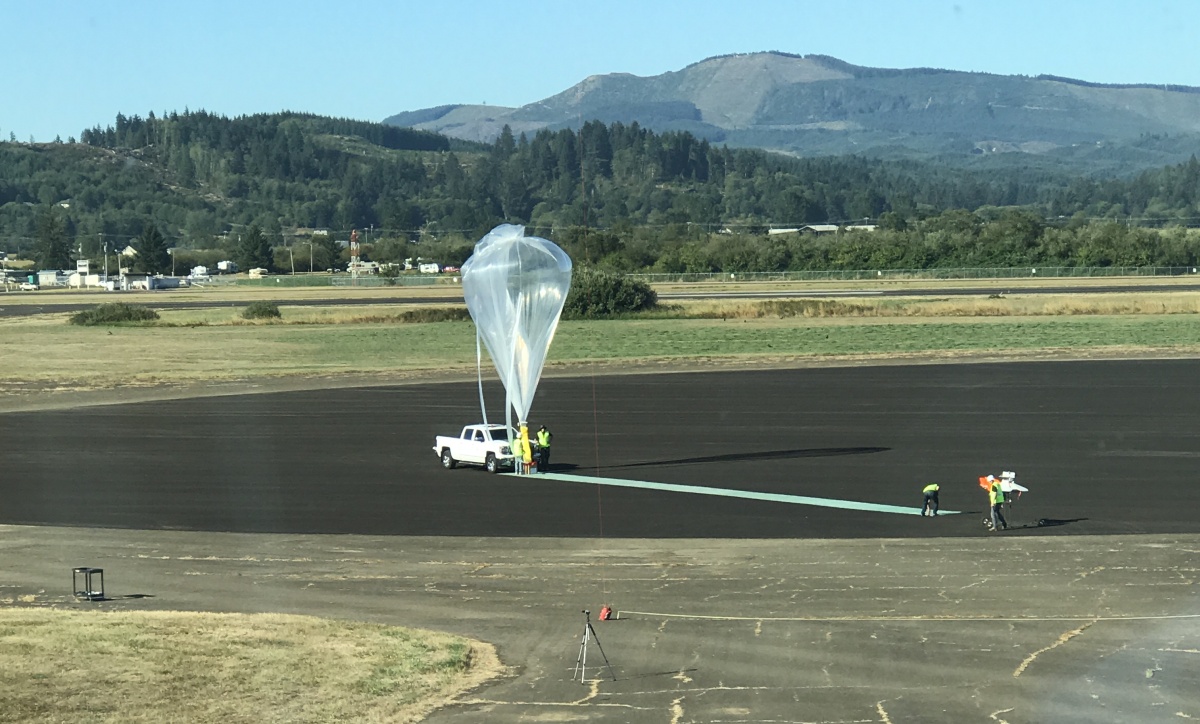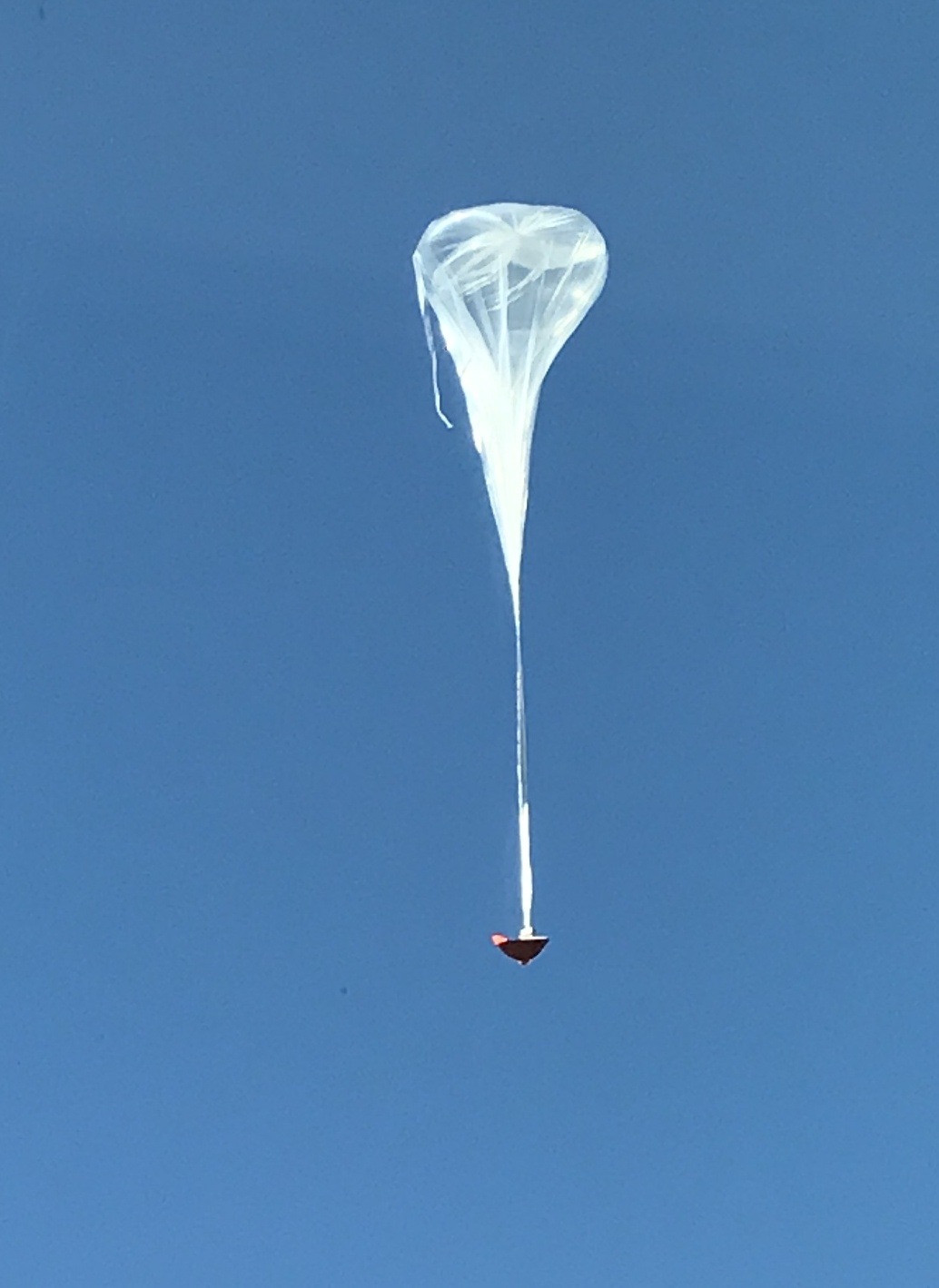Purpose of the flight and payload description
The High Altitude Shuttle System (HASS) is a lifting body-shaped gliding unmanned aerial system developed by Near Space Corporation aimed to carry new technologies to high altitude for testing and then released to fly back and land in semi-autonomous flight. At left can be seen an image of the HASS in flight (click to enlarge).
Standard HASS platforms can lift payloads of up to 10 kg to altitudes of 28 km for flights of up to six hours. Non-standard options include higher altitudes and longer flight durations. For HASS, the primary payload bay is comprised of the center section of the Shuttle with payload attachment and access provided through its bottom hatch. This composite payload tray/hatch serves as the 'framework' onto which the payload is mounted. The standard HASS avionics suite is mounted on the forward part of the tray just prior to launch. All other real estate on the payload tray is available for primary payload use within the enclosed physical constraints of the Shuttle center-body, the 10 kg maximum payload weight limit, and specified center of gravity constraints.
The HASS semi-autonomously can return payloads to pre-specified landing sites, allowing payloads to be rapidly turned around and reused in reflights. Other caracteristics of the platform are an enhanced flight path control from release thru landing, iterative payload changes between frequent, high altitude flight tests and high quality reduced gravity parabolic flights. Combining HASS with NSC's Tactical Balloon Launch System (TBLS) is also possible to launch the glider under a balloon in winds up to 30 knots with a minimal crew of 2 or 3 persons from remote sites.
Details of the balloon flight
Balloon launched on: 9/2/2017
Launch site: Naval Air Station Tillamook, Oregon, US
Balloon launched by: Near Space Corporation (NSC)
Balloon manufacturer/size/composition: Zero Pressure Balloon
Flight identification number: HASS-04
End of flight (L for landing time, W for last contact, otherwise termination time): 9/2/2017
External references
- Near Space Corporation Takes Its Flying Testbed to New Heights Flight Opportunities Newsletter, September 2017
14287If you consider this website interesting or useful, you can help me to keep it up and running with a small donation to cover the operational costs. Just the equivalent of the price of a cup of coffee helps a lot.




